Traffic signals
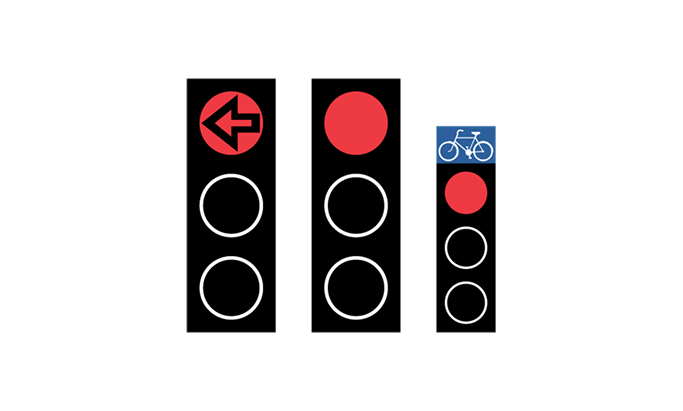
SIG1 Red
Red light always means you must stop. Vehicles may not pass the stop line or, if such a line is missing, the signal itself. If the signal shows an arrow outline, it applies only to the direction(s) indicated by the arrow.
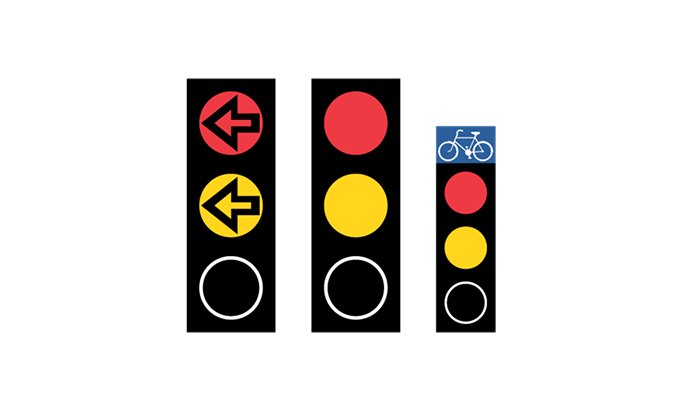
SIG2 Red + amber
Red and amber indicate that the light will soon change to green. Stop and wait for the green light before proceeding. Just like with the red light, you may not pass the stop line or the signal itself.
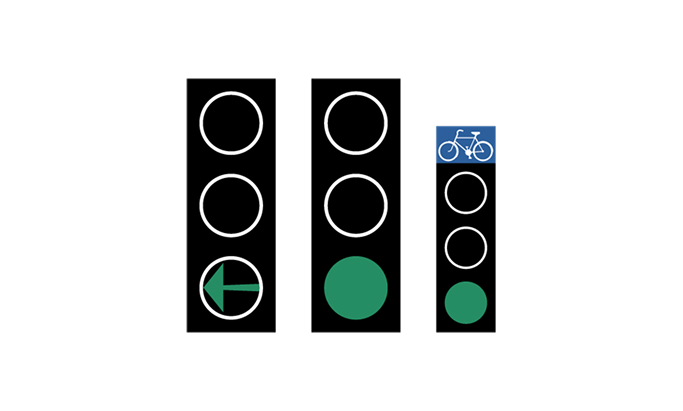
SIG3 Green
Green light means you may proceed. If a green arrow is shown, the signal applies only to the direction indicated by the arrow. You may proceed in the arrow’s direction even if other signals are displayed simultaneously. Pedestrians who started crossing during the green light are entitled to finish crossing, even if you get a green light while they are still crossing the road. Always stay alert, as others may run red lights.
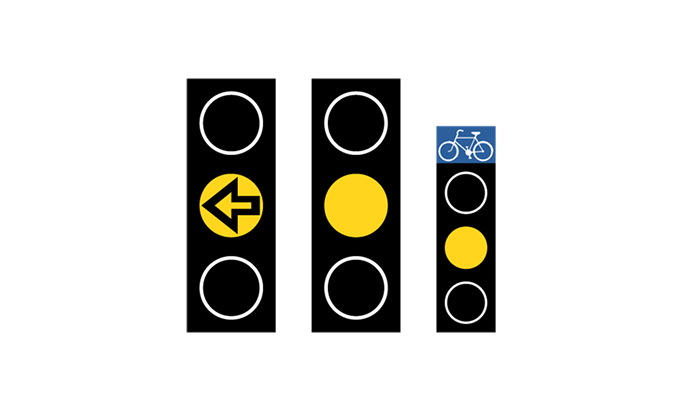
SIG4 Amber
Amber light warns that the red light will follow shortly. You should stop if it is safe to do so. If you are so close that stopping would be unsafe, you may however proceed.
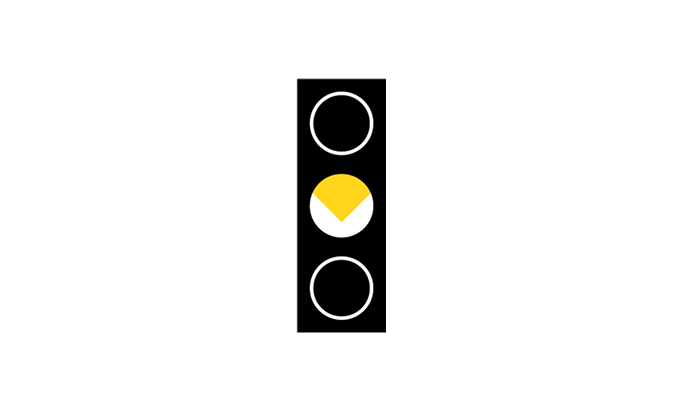
SIG5 Flashing amber
A flashing amber light means special caution shall be exercised. The traffic signals at the intersection are not functioning, so traffic signs must be followed instead. If a give way sign is present, you must give way to crossing traffic. If no signs are present, the right-hand rule applies.
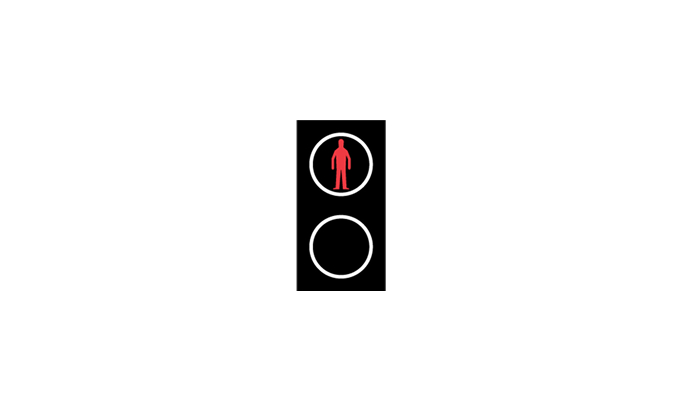
SIG6 Red acoustic signal pulsating with slow frequency
This signal means you must stop, as entering the roadway, cycle path, railway, tramway, or similar crossing where the signal is located is prohibited. Pedestrians already on the crossing when the red signal activates should continue crossing.
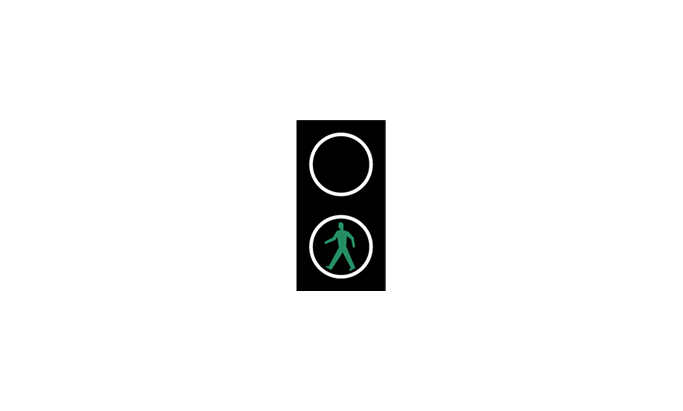
SIG7 Green acoustic signal pulsating with fast frequency
Green light with a fast pulsating frequency means you may cross the roadway, cycle path, or tramway. However, always stay alert, as some may cross earlier than permitted.
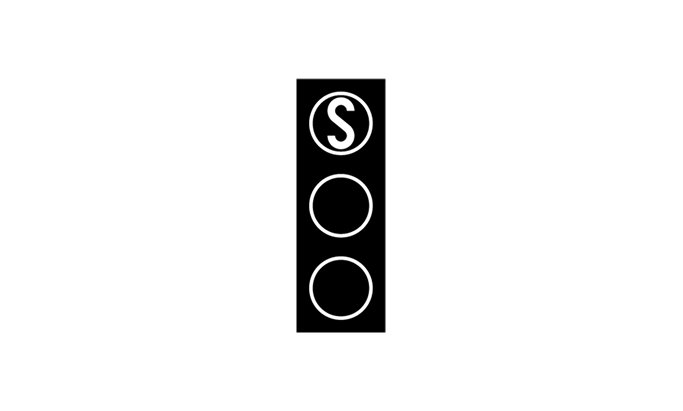
SIG8 S
S means Stop. Vehicles, such as cars and trams, may not pass the stop line or, if such a line is missing, the signal itself.
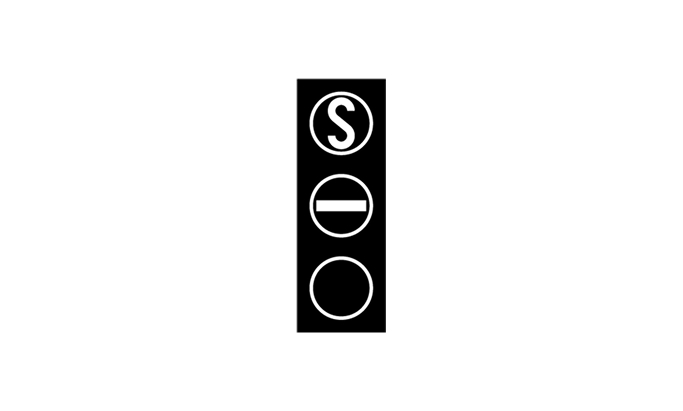
SIG9 S + horizontal line
A change to a vertical line is about to occur. Otherwise, the same rules as for the S signal apply.

SIG10 Vertical line or arrow
Vehicles and trams may proceed forward. If the signal shows an arrow, it applies only to the direction indicated by the arrow.
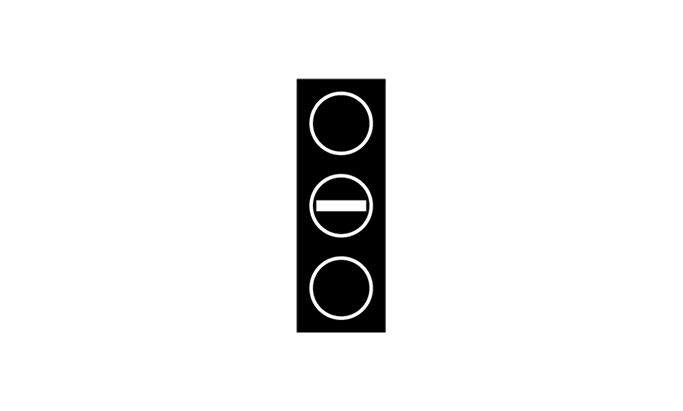
SIG11 Horizontal line
This signal means you must stop. Vehicles and trams may not pass the stop line or the signal itself. The exception is if you are so close that stopping would be dangerous.

SIG12 Red cross
The lane and possibly the hard shoulder may not be used for traffic.
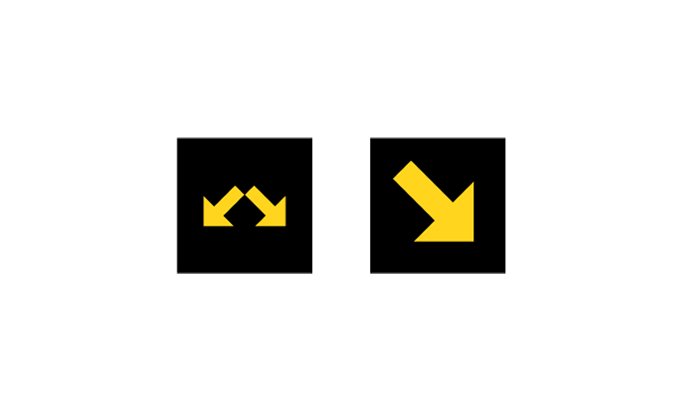
SIG13 Yellow arrow or yellow arrows
You must change lanes in the direction indicated by the arrow or arrows.

SIG14 Green arrow
The lane is open for traffic. Sometimes, the green arrow is replaced with a sign providing the same information.
SIG15 Flashing red light
This signal means you must stop. Stop and turn off the engine to reduce environmental impact. Do not proceed until the signal turns off.

SIG16 Flashing red light
This signal means you must stop. You may not pass the stop line or, if such a line is missing, the signal itself.

SIG17 Steady red light
This signal indicates that the road is closed, so do not proceed.

SIG18 Flashing amber light calling for extra caution
This signal is used to warn that a road is partially closed or to draw attention to a particular road sign or device, thereby reinforcing its indication. The placement and amount of lights are adapted to the situation the signal is intended to clarify.